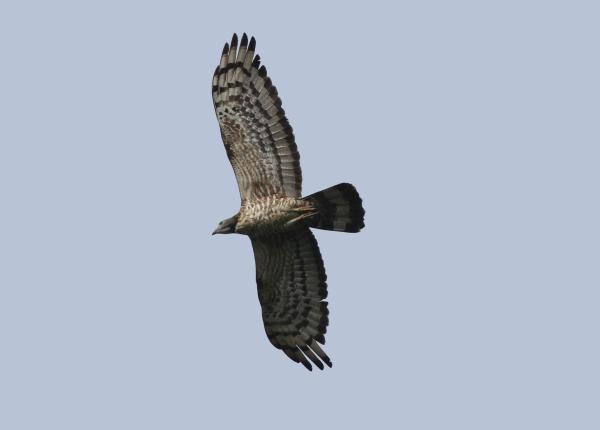Did You Know?
- There are six recognized subspecies of the Oriental Honey-buzzard
- This raptor has a few adaptations for feeding on stinging insects and rooting around for insects. They have scale-like feathers around their eyes, very thin nares and long toes, to name a few
- Scientists studying this species in captivity suggest that they use their sense of smell to identify food at close range
How The Peregrine Fund is Helping
Though The Peregrine Fund doesn't work directly with Oriental Honey-buzzards, our efforts in scientific research, habitat conservation, education, and community development help conserve raptors around the world. We also supply literature to researchers from our avian research library, which helps scientists the world over gather and share important information on raptor conservation. We also run the Global Raptor Impact Network which gives raptor researchers tools to more efficiently conduct their own studies while contributing to a global program. GRIN also provides citizen scientists a way to participate in raptor science and conservation.
Where They Live
The Oriental Honey-buzzard is found in a wide variety of habitats from lowland and montane deciduous broad-leafed or mixed broad-leafed/coniferous forests with river valleys, open wooded country, edge habitats, and at the edge of mangroves. It is also spends time in coconut and overgrown rubber plantations and even in wooded urban parks in parts of its range.
Why They Need our Help
This species is considered to be common in both its breeding and wintering ranges. It is categorized as a species of "Least Concern", however this doesn't mean it isn't facing any threats. Some scientists believe that this species may be vulnerable to wind-energy development while it is in migration.
What They Eat
The Oriental Honey-buzzard gets its name because it often feeds on the larvae and honey of bees and wasps. However, they will also feed on other insects such as crickets, termites and ants. And they will also hunt lizards, frogs, small mammals and birds.
Nest, Eggs and Young
This raptor builds a stick nest placed in a tall tree. The female will lay 1-2 eggs, which are white with bright reddish-brown markings. Once the eggs are laid, they must be incubated for between 28–35 days. Both the male and the female will share in incubation duties and in feeding the nestlings after they hatch. Nestlings develop quickly and will fly from the nest when they are around 35–45 days old. However, they will remain in their parents' territory for 5–8 weeks after that as they learn to survive on their own.
Oriental Honey-buzzard and The World Center for Birds of Prey
The World Center for Birds of Prey offers fun ways to learn about birds of prey. Interactive activities, tours, interesting videos and a children's room with activities from coloring sheets to quizzes to costumes are all available for our guests. We also have knowledgeable, on-site staff to answer any questions you may have about Oriental Honey-buzzards or any other bird of prey.
References
Global Raptor Information Network. 2023. Species account: Crested Honey Buzzard Pernis ptilorhyncus. Downloaded from http://www.globalraptors.org on 28 Dec. 2023
Orta, J., J. S. Marks, and G. M. Kirwan (2020). Oriental Honey-buzzard (Pernis ptilorhynchus), version 1.0. In Birds of the World (J. del Hoyo, A. Elliott, J. Sargatal, D. A. Christie, and E. de Juana, Editors). Cornell Lab of Ornithology, Ithaca, NY, USA. https://doi.org/10.2173/bow.orihob2.01









